Hello Wonderful Community and Heart Centred Practitioners.
Many of you know the core work Robin offers in the world. As well as Permaculture, her key focus and offering is the ‘Dynamic Groups, Dynamic Learning’ courses, workshops, writings and educational resources.
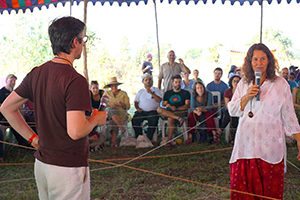
She feels very strongly that to support our world, our communities and positive change in education, the environment, social and political challenges etc we need people who are well skilled and trained in facilitation and group work.
Groups form the basis of much positive action and community building. Education creates the backbone of new foundations and for learning a positive, peaceful and powerful way forward for our children, youth and also adults needing more tools, ideas and purpose.
If our groups are well facilitated and work easily together, they are more effective at meeting their purpose and everything works out better for everyone, including all the people who benefit from the group and also, our world, if the group has a People Care and/or Earth Care focus.
Many of us have great skills and wisdom to share.
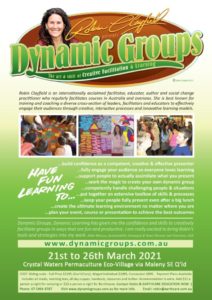 The ‘Dynamic Groups, Dynamic Learning’ 6 day training equips people with the skills, confidence, tools and processes to support all kinds of groups and educational situations in a creative, interactive and empowering way.
The ‘Dynamic Groups, Dynamic Learning’ 6 day training equips people with the skills, confidence, tools and processes to support all kinds of groups and educational situations in a creative, interactive and empowering way.
The annual Crystal Waters course is from 21st to 26th March and you’re invited to consider attending if you are involved or would like to be more involved in education, training, group work and facilitation.
If any of your family, friends or colleagues might be interested, you passing this info on would be much appreciated. Here’s the poster and thank you so much for your support.
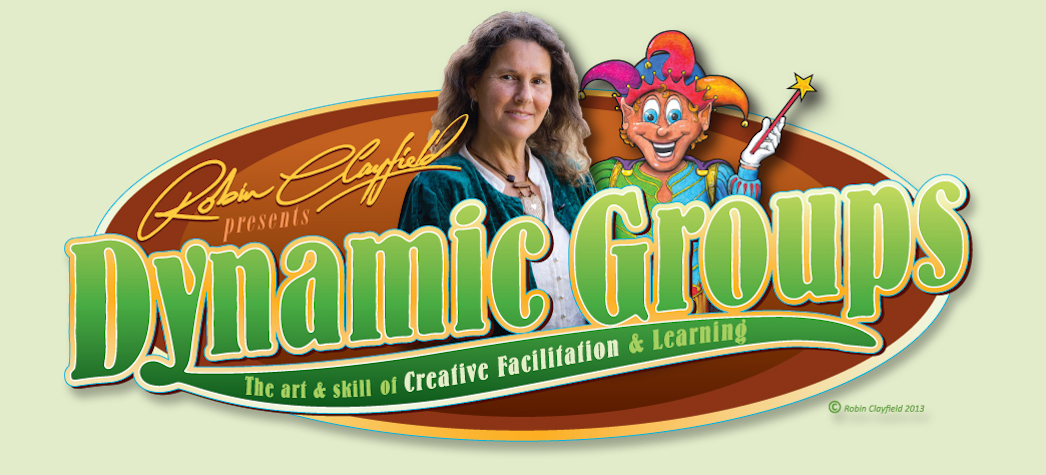 Dynamic Groups, Dynamic Learning Dynamic Courses, Books, Resources and Tours for Healthy Groups, People and Culture with Robin Clayfield
Dynamic Groups, Dynamic Learning Dynamic Courses, Books, Resources and Tours for Healthy Groups, People and Culture with Robin Clayfield
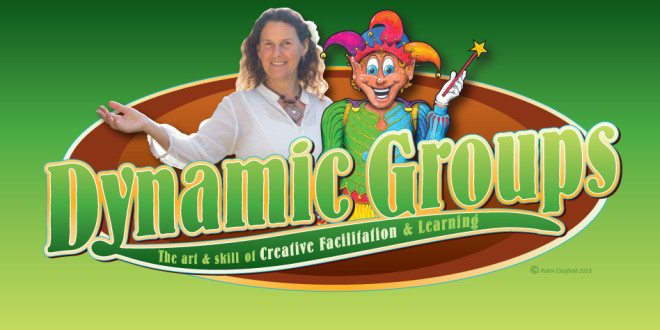
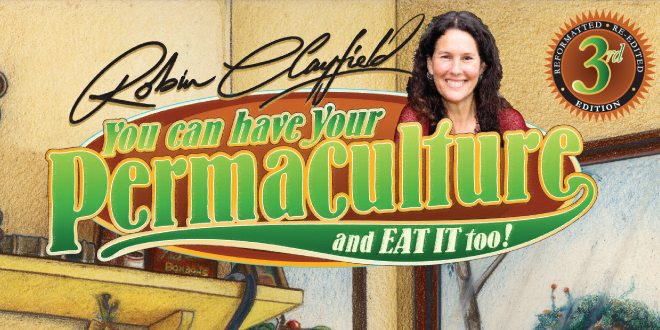

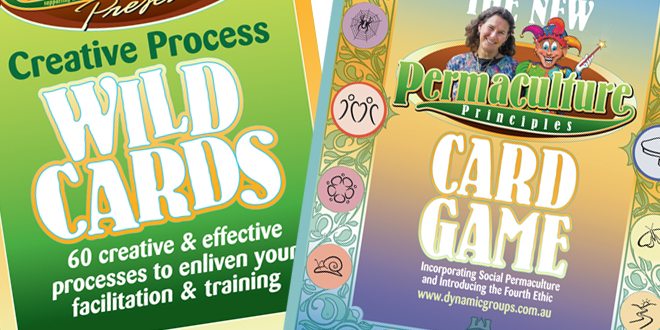


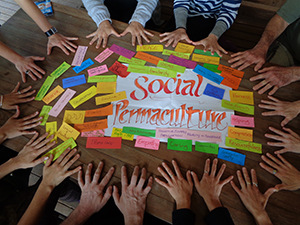
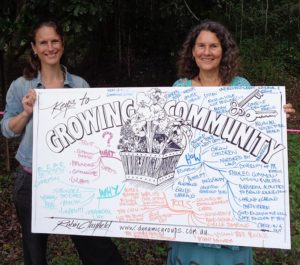
 A colour coding system has been designed to easily show readers all the activities. They will certainly stand out from the general text, having a distinct heading and delightful background colouring and design. The various Processes described in the book will have their own unique heading and design, as will the quotes and the visualisations which are sprinkled throughout. This image is an example of the Activity Coding, though it hasn’t had words typed over the background.
A colour coding system has been designed to easily show readers all the activities. They will certainly stand out from the general text, having a distinct heading and delightful background colouring and design. The various Processes described in the book will have their own unique heading and design, as will the quotes and the visualisations which are sprinkled throughout. This image is an example of the Activity Coding, though it hasn’t had words typed over the background. “I assist the gaining of skills and knowledge plus the progress of the group and each individual in an active, energetic, meaningful, smooth and progressive way. This enables outcomes of success, achievement of individual and group goals, enhanced learning, fun, motivation, support and innovation, for a better world.”
“I assist the gaining of skills and knowledge plus the progress of the group and each individual in an active, energetic, meaningful, smooth and progressive way. This enables outcomes of success, achievement of individual and group goals, enhanced learning, fun, motivation, support and innovation, for a better world.”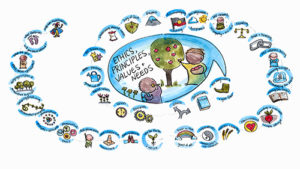 Brenna was commissioned to create seven ‘Art Maps’ to grace the beginning of seven of the main chapters. They are ‘Mind Maps’ but with the words transformed into art. The delightful and soft pastel colours that Brenna is famous for has given designer and formatter Meg an additional theme to incorporate into the creative touches and elements of the book.
Brenna was commissioned to create seven ‘Art Maps’ to grace the beginning of seven of the main chapters. They are ‘Mind Maps’ but with the words transformed into art. The delightful and soft pastel colours that Brenna is famous for has given designer and formatter Meg an additional theme to incorporate into the creative touches and elements of the book. The big bonus is that Robin will be organising a super big gig for Charlie and his full band the night after the course finishes at Crystal Waters. Mal Webb and Kylie Morrigan from Melbourne will be travelling up to join Charlie and the night promises to be a huge and joyous experience for celebrating Life, Permaculture Living, Earth Care, People Care and all that’s good in our world. There will be a few surprises for sure and definitely lots of dancing.
The big bonus is that Robin will be organising a super big gig for Charlie and his full band the night after the course finishes at Crystal Waters. Mal Webb and Kylie Morrigan from Melbourne will be travelling up to join Charlie and the night promises to be a huge and joyous experience for celebrating Life, Permaculture Living, Earth Care, People Care and all that’s good in our world. There will be a few surprises for sure and definitely lots of dancing.